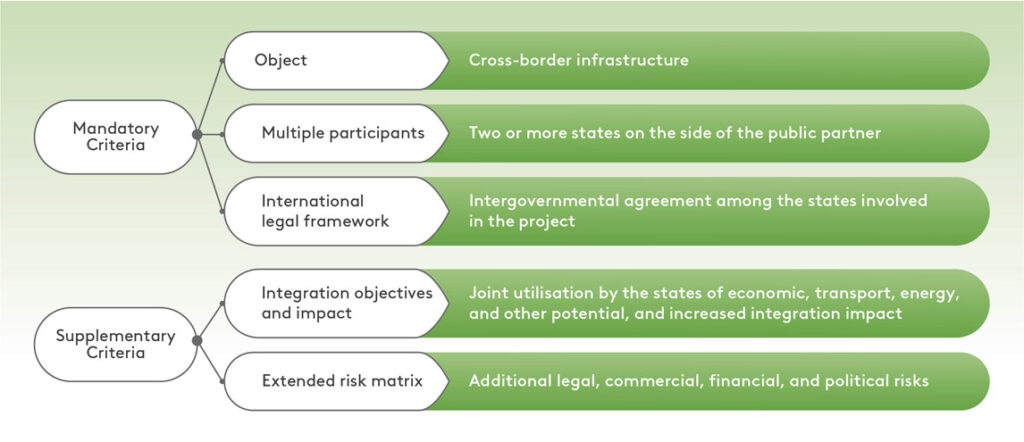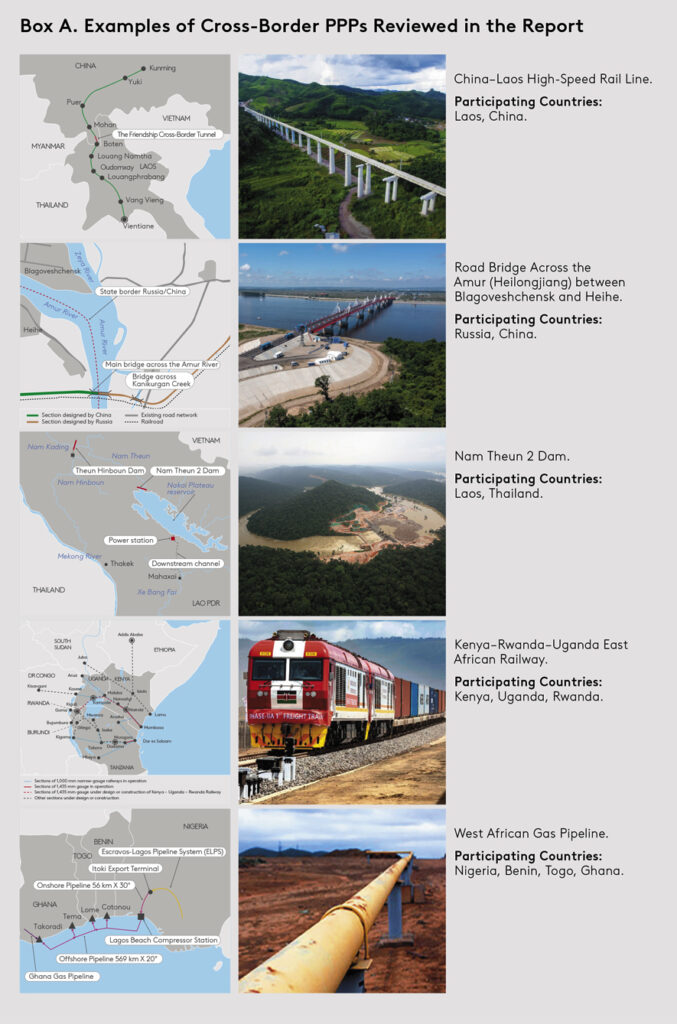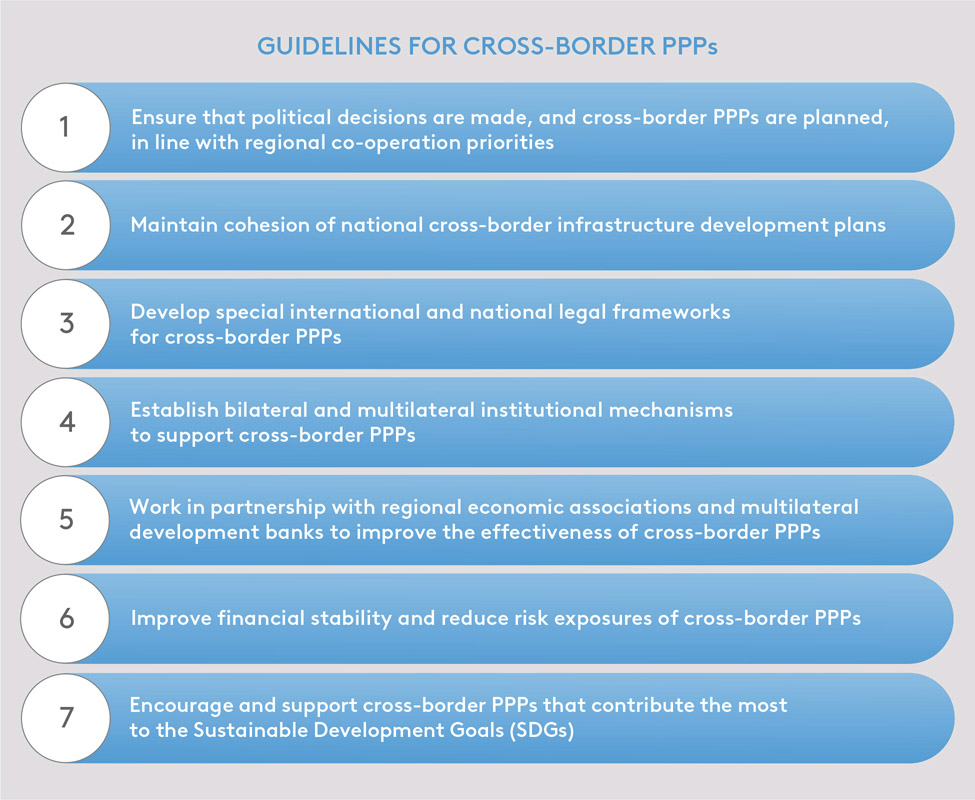The new report by the EDB outlines the criteria and scope of cross-border PPP projects, evaluates their potential for fostering cross-border infrastructure development in the EAEU, Central Asia, and the South Caucasus, and suggests guidelines for the successful implementation of cross-border PPPs in the region.
Cross-border infrastructure connects countries and meets the needs for trade in goods and services, the movement of people, and the transmission of electricity and information. With the enhancement and diversification of cross-country and regional economic ties, the development of cross-border infrastructure has become increasingly important, especially to landlocked countries. These infrastructure projects involve two or more countries and necessitate substantial private investment, along with coordination among various stakeholders. Cross-border PPPs emerge as an efficient mechanism for implementing such projects.
Cross-border PPPs leverage the resources of public and private partners, bridging the gap in public funds for cross-border infrastructure development and addressing challenges arising from variations in investment opportunities and legislations across countries. By pooling their efforts as well as financial and other resources, countries involved as public partners in cross-border PPP projects can achieve benefits that would be unattainable if they pursued individual national PPP projects. Engaging a private partner, typically a single entity, in such projects ensures consistent and coordinated execution of the PPP agreement across all participating countries.
A key criterion in cross-border PPPs is the composition of their participants. Primarily, these projects involve multiple public partners, represented by two or more governments or their authorised bodies. Cross-border PPP projects extend beyond the jurisdiction of a single country, requiring specific rules and regulations to govern all involved partners. These regulations are established through an international treaty agreed upon by the participating countries, serving as the legal framework for the preparation and implementation of cross-border PPPs.
Cross-border PPP identification criteria

Several dozen cross-border PPP projects worldwide have successfully been implemented to develop transport infrastructure (railways, roads, pipelines), water and energy facilities, and telecommunications. However, in Eurasia, cross-border PPPs have hardly been used, with the exception of the project between Russia and China to construct and operate a road bridge across the Amur River connecting the cities of Blagoveshchensk and Heihe.

Enhancing infrastructure connectivity through cross-border projects is an important argument for their implementation in Eurasia, considering its geography, length of national borders, economic and transport links, as well as the importance of the water and energy complex.
To facilitate the successful implementation of cross-border PPP projects in Eurasia, the EDB has developed guidelines based on international best practices in cross-border infrastructure development. These guidelines aim to strike a balance between the objectives of cross-border infrastructure development and the interests of each participating country, provide guidance on ensuring financial sustainability and attracting investors and lenders to these projects, help identify actions that promote the smooth and secure operation of cross-border infrastructure on both sides of the border, and are necessary to adapt the legal framework for cross-border PPPs to maximise the benefits of these projects and enhance their contribution to SDGs.

Cross-border PPPs demand resources and coordinated financial planning among countries. This means that multilateral development banks (MDBs) and their syndicates can play a pivotal role in this process. MDBs, with their diverse membership, serve as platforms for coordinating the positions of various countries and develop environmental and social frameworks that can be utilised in formulating feasibility studies for cross-border projects. Participating countries may collectively approach MDBs for technical assistance in developing feasibility studies, drafting intergovernmental agreements, and obtaining loans for project implementation.
Building upon these analyses and guidelines, the EDB will develop a model agreement that embodies the best contractual practices for countries engaging in cross-border PPPs. Utilising this model agreement by relevant countries would streamline and expedite international negotiations, fostering greater certainty in the formulation and harmonisation of the contracting countries’ positions. As part of its 2022–2026 Strategy, the Bank could serve as a think tank, offering legal counsel and assisting interested governments in developing intergovernmental agreements for infrastructure projects utilising the cross-border PPP mechanism.
You can view the report Cross-Border Public-Private Partnerships at the EDB website.